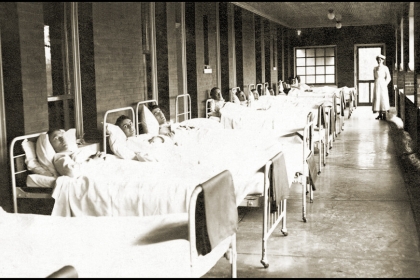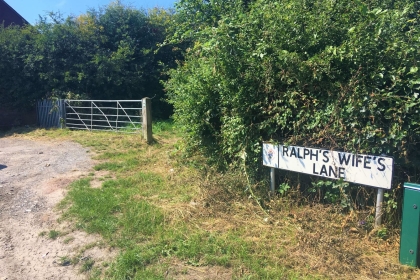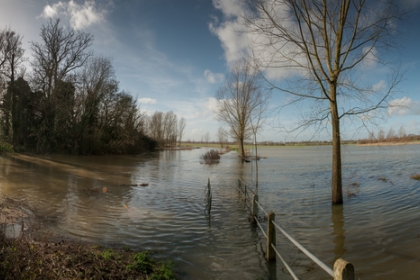Situated at the south of the stunning Ribble Estuary on the beautiful stretches of the Sefton coast, the semi-rural village of Banks is the perfect place to set up home for those who want a piece of the quiet life.
Once a quiet farming community, its close location to the areas of Southport and Liverpool has seen the rural town merge with modernity, allowing its residents to experience the best of both worlds with nothing but roads separating them from the vibrant worlds of touristic towns and busy city-centres. This collaboration between old and new means that there is a collection of houses to suit any buyer, from converted farmhouses and Victorian cottages to quaint bungalows and impressive newbuilds.
This quaint village with its country lanes and farmers’ fields feels distinctly separated from the outside world. However, it is this kind of separation that makes Banks feel wonderfully homely, where there is a tangible sense of community and an escape from the reality many have come to know.
This quaint village with its country lanes and farmers’ fields feels distinctly separated from the outside world. However, it is this kind of separation that makes Banks feel wonderfully homely, where there is a tangible sense of community and an escape from the reality many have come to know.
Five Quick Facts
 1
The village in Banks was the site where the beautiful Greaves Hall stood until its demolition in 2009. It was originally built by a Thomas Scarisbrick as a residential home before being used as a tuberculosis hospital.
1
The village in Banks was the site where the beautiful Greaves Hall stood until its demolition in 2009. It was originally built by a Thomas Scarisbrick as a residential home before being used as a tuberculosis hospital.
 2
‘Ralph’s Wife Lane’ is full of local legend. It is said that Ralph was lost at sea and his wife would continue to wait by her window every night for his return. The ghost of his wife has been reported by locals, walking along the lane with a lamp, still looking for her husband who never returned.
2
‘Ralph’s Wife Lane’ is full of local legend. It is said that Ralph was lost at sea and his wife would continue to wait by her window every night for his return. The ghost of his wife has been reported by locals, walking along the lane with a lamp, still looking for her husband who never returned.
 3
The village sits only slightly above sea level and in order to protect it from flooding, artificial embankments were created. Before this, in 1719, a tidal wave flooded the village after the banks burst, washing away forty-seven homes. The biggest coastal disaster in this history of the area.
3
The village sits only slightly above sea level and in order to protect it from flooding, artificial embankments were created. Before this, in 1719, a tidal wave flooded the village after the banks burst, washing away forty-seven homes. The biggest coastal disaster in this history of the area.
 4
Its name is thought to be derived from the embankments near the Ribble Estuary. Its original name, however, is a little more ancient. Meles, meaning Sand Dunes, sat at one of the most northerly points of the West Derby Hundred, one of the six original subdivisions of Lancashire.
4
Its name is thought to be derived from the embankments near the Ribble Estuary. Its original name, however, is a little more ancient. Meles, meaning Sand Dunes, sat at one of the most northerly points of the West Derby Hundred, one of the six original subdivisions of Lancashire.
 5
The Ribble Estuary is considered to be a Site of Special Scientific Interest (SSSI) due to the variety of wildlife that can be found there. Visitors will be able to spot an array of beautiful creatures including the Ruff, Whooper Swan and the Sanderling.
5
The Ribble Estuary is considered to be a Site of Special Scientific Interest (SSSI) due to the variety of wildlife that can be found there. Visitors will be able to spot an array of beautiful creatures including the Ruff, Whooper Swan and the Sanderling.
Lifestyle & Activities
As a semi-rural area, Banks is a very quiet place that offers more of a countrified take on residential suburbia. Offering a taste of traditional village life, prospective residents here can expect to lead a slow-paced lifestyle, albeit within easy access of the more vibrant places of the North West.
It is in the village centre of Banks where residents can find their local amenities, from a grocery store, post office and a traditional pub, surrounded by the residential homes of Banks’ residents and vast country fields that separate the village from the outside world.
Located on the leafy Greaves Hall Avenue, Banks Leisure Centre is at the heart of the village’s health and fitness regime, suitable for all the family to join. Home to an all-weather football pitch, sports hall and fitness suite, there is so much to do at the leisure centre that the seasonal changes would not affect. The centre host classes for a range of ages, from little ones to the over fifties, making it a great place to visit as a family.
Residents here can worship in two of the village’s churches including the Banks Methodist Chapel and the St. Stephen’s Church. As well as their main focus on worship, both churches play host to a range of events and activities, helping to bond the community together. From coffee mornings, brownie groups and bible study.
It is in the village centre of Banks where residents can find their local amenities, from a grocery store, post office and a traditional pub, surrounded by the residential homes of Banks’ residents and vast country fields that separate the village from the outside world.
Located on the leafy Greaves Hall Avenue, Banks Leisure Centre is at the heart of the village’s health and fitness regime, suitable for all the family to join. Home to an all-weather football pitch, sports hall and fitness suite, there is so much to do at the leisure centre that the seasonal changes would not affect. The centre host classes for a range of ages, from little ones to the over fifties, making it a great place to visit as a family.
Residents here can worship in two of the village’s churches including the Banks Methodist Chapel and the St. Stephen’s Church. As well as their main focus on worship, both churches play host to a range of events and activities, helping to bond the community together. From coffee mornings, brownie groups and bible study.
Schools
The village of Banks is home to just two primary schools, including the Banks Methodist School which educates children from the ages of two to eleven years old. As a church school, Banks Methodist works closely with the church itself and follows the Methodist Foundation. Every Tuesday morning, the schools' host worship in the local church, children are walked by the teachers and parents are invited to join.
As a small school with smaller class sizes than the average primary, parents can expect their child’s teacher to take a more focused approach to their education, getting to know their strengths and areas for improvement. Its most recent Ofsted report picked up on this, with the area of Effectiveness of Leadership and Management being rated as ‘Outstanding’. The school also hosts ‘Bring Your Parent to School Days’, allowing parents to understand what their children are learning and how subjects are taught.
The other option for teachings is the Banks St. Stephen’s Church of England Primary School, housed in the former hospital school at Greaves Hall, which was converted for use of St. Stephen’s Primary.
As a small school with smaller class sizes than the average primary, parents can expect their child’s teacher to take a more focused approach to their education, getting to know their strengths and areas for improvement. Its most recent Ofsted report picked up on this, with the area of Effectiveness of Leadership and Management being rated as ‘Outstanding’. The school also hosts ‘Bring Your Parent to School Days’, allowing parents to understand what their children are learning and how subjects are taught.
The other option for teachings is the Banks St. Stephen’s Church of England Primary School, housed in the former hospital school at Greaves Hall, which was converted for use of St. Stephen’s Primary.
